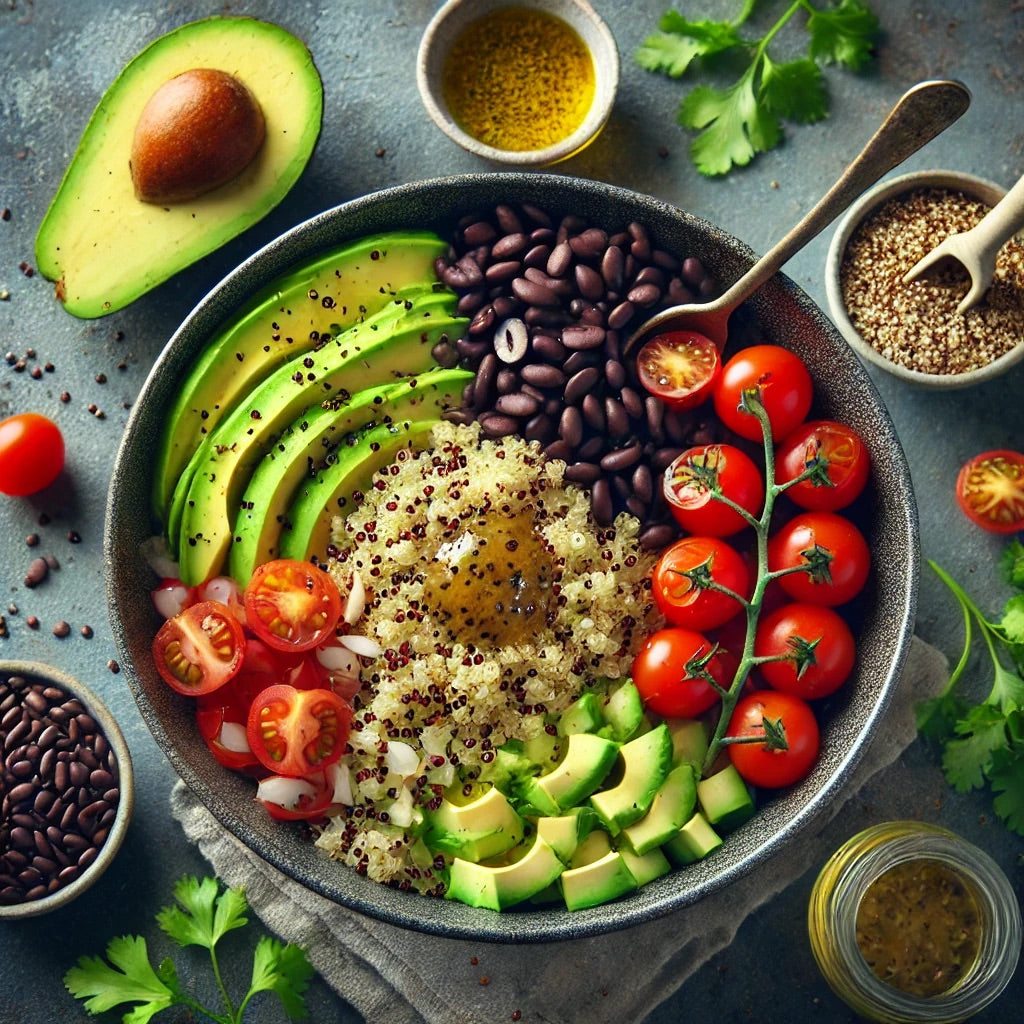
Quinoa Salad Recipe: Low-Glycemic Meal for Insulin Control
Share
The glycemic index (GI) is a measure that ranks foods according to their impact on blood glucose levels. Foods with a high GI cause a rapid spike in blood sugar, which leads to a corresponding increase in insulin levels as the body works to manage the influx of glucose. Conversely, low-GI foods cause a slower, more gradual rise in blood sugar and insulin. Understanding and utilizing the glycemic index is crucial for maintaining stable blood glucose and insulin levels, which is particularly important for people managing conditions like diabetes or those aiming to optimize their metabolic health.
Insulin is a hormone that helps regulate blood glucose levels by facilitating the uptake of glucose into cells for energy or storage. When high-GI foods are consumed, the rapid increase in blood sugar requires a swift and significant release of insulin. Over time, repeated spikes in insulin can lead to insulin resistance, a condition where the body's cells become less responsive to insulin, increasing the risk of type 2 diabetes and other metabolic disorders. By incorporating more low-GI foods into your diet, you can help maintain more stable insulin levels and reduce the risk of developing these conditions.

To manage blood sugar levels through food, it's essential to focus on incorporating a variety of low-GI foods into your meals. These include non-starchy vegetables like spinach, broccoli, and cauliflower, whole grains such as quinoa and barley, legumes like lentils and black beans, and fruits such as berries and apples. These foods are digested and absorbed more slowly, resulting in a steadier release of glucose into the bloodstream and less demand on insulin production. Additionally, pairing high-GI foods with protein or healthy fats can help slow down the absorption of glucose, mitigating blood sugar spikes.
Another key tip for managing blood sugar levels is to avoid processed and refined carbohydrates, which tend to have a high GI. Foods like white bread, sugary snacks, and sweetened beverages cause rapid increases in blood sugar and should be consumed sparingly. Instead, focus on whole, unprocessed foods that provide essential nutrients and fiber. Fiber, in particular, plays a significant role in managing blood sugar levels by slowing down digestion and the absorption of carbohydrates. Including fiber-rich foods like vegetables, fruits, whole grains, and legumes in your diet can greatly contribute to maintaining stable blood glucose and insulin levels.
Quinoa Salad Recipe

What You'll Need:
For the Salad:
- 1 cup quinoa, rinsed
- 2 cups water
- 1 can (15 ounces) black beans, rinsed and drained
- 1 avocado, diced
- 1 cup cherry tomatoes, halved
- 1/2 red onion, finely chopped
- 1 cup corn kernels (fresh or frozen, thawed)
- 1/4 cup fresh cilantro, chopped
For the Lime Dressing:
- 3 tablespoons olive oil
- 1.5 tsp honey
- 1/2 teaspoon cumin
- 1/2 teaspoon paprika
- Juice of 2 limes
- Salt and pepper to taste
How to make it:
-
Cook the Quinoa:
- In a medium saucepan, combine the quinoa and water. Bring to a boil over medium-high heat.
- Reduce heat to low, cover, and simmer for about 15 minutes or until the quinoa is tender and the water is absorbed.
- Remove from heat and let it sit, covered, for 5 minutes. Fluff with a fork and let it cool.
-
Prepare the Dressing:
- In a small bowl, whisk together the olive oil, honey (or agave syrup), cumin, paprika, lime juice, salt, and pepper. Adjust seasoning to taste.
-
Assemble the Salad:
- In a large bowl, combine the cooked quinoa, black beans, diced avocado, cherry tomatoes, red onion, corn, and chopped cilantro.
- Pour the lime dressing over the salad and toss gently to combine, ensuring all ingredients are well-coated.
-
Serve:
- Serve immediately or refrigerate for up to 2 hours to allow the flavors to meld. This salad can be served chilled or at room temperature.
Nutrition Information (Per Serving): this recipe makes about 4 servings.
- Calories: 320
- Protein: 9g
- Carbohydrates: 40g
- Dietary Fiber: 11g
- Sugars: 6g
- Fat: 15g
- Saturated Fat: 2g
- Sodium: 240mg
This quinoa salad is packed with nutrients, providing a balanced mix of carbohydrates, protein, and healthy fats, making it an excellent choice for maintaining stable insulin levels during eating periods.
